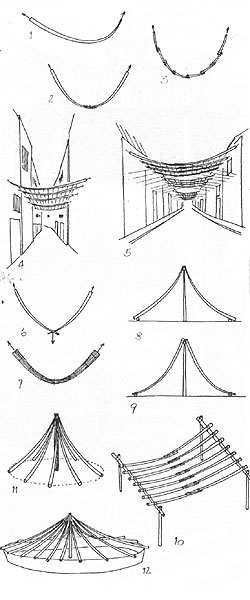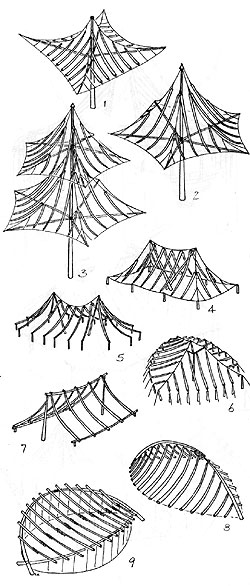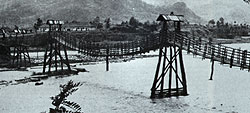Structural Systems

Hanging Curves
Hanging Curves
Vegetal rods which, as a result of their low flexural rigidity but high tensile strengh, are suitable for structures subjected to tensile strebgh produce a caracteristic, asymmetric hangig / bending curve when hung between two bearings.This form becomes more obvious the greater the load is.
For larger spans and symmetrical roof forms, two or even several rods are combined. Normaly suspended roofs must be stablished by under spanning.
A number of different arch forms are necessary depending on the load situation. Arches, which must bear for example an additional spot load in the centre, are built as suspended pointed arches.
The addition of several hanging / bending curves forms characteristical structures in particular tent-like suspended roofs.

Tent-like structures
Tent-like structures
DAs the traditional structure in Asia, the umbrella-like tent roof with groins and hoizontal compression struts has probably been developed to become the classic form. In addition to being able to form groins and edge supports as ropes, these elements can also be replaces by flexible rods.In order to cover large floor plans, it is posible to fan out into a two branch tent with suspended ridge. These structures are formed by combinations of compression and tension elements.


